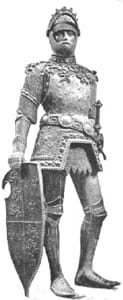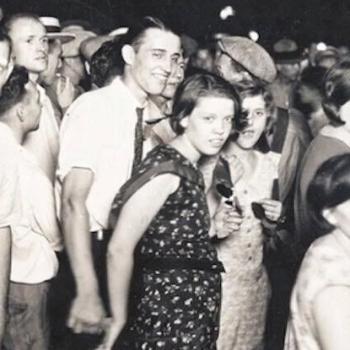 As Flannery O'Connor put it in one her letters, collected in The Habit of Being:
As Flannery O'Connor put it in one her letters, collected in The Habit of Being:
Discovering the Church is apt to be a slow procedure but it can only take place if you have a free mind and no vested interest in disbelief . . .
A free mind is the last thing that most people think of when meeting a Catholic. Looking deeper into Catholic teachings after I converted, I was surprised and pleased to find logic and sanity. Looking with new eyes at the world around me, however, was where the faith overlaid what I knew as "reality" with a new beauty and depth. Suddenly I had so much more to discover.
It is like the difference between reading a sonnet versus plain prose. The discipline imposed by a sonnet's rhyme and metric structure elevates the poem from a mere message to something beautiful and complex. It yields additional meaning with every reading. That same beauty and complexity can be espied everywhere by a free mind that is focused by the Truth that the Church reveals.
I saw this first and foremost in my reading. I've been a bookworm all my life. Old favorites became like new creations as I reread them with the knowledge of the "one reality" that underlies all. The real beauty of the Church's inescapable logic and dedication to Truth is the fact that this goes forward as well as backward. When we're attuned to the "One Reality," then there are many glorious new stories to explore that also can surprise us by showing aspects of God. I am looking forward to this being a place where we discuss them.
What sorts of stories? Well, you might be surprised. I certainly have been.
For example, I recently had to read Le Morte d'Arthur. This is not as unexpected as it might seem. For about a year I have felt stalked by various classics that I, on my own, would never have chosen to read. Shamelessly using book clubs, podcasts, and my own family, these books have pressed themselves into my hands, seemingly intent on exposing me to what I had managed to avoid so far. Uncle Tom's Cabin, The Scarlet Letter, A Tale of Two Cities, Gulliver's Travels, and even the Epic of Gilgamesh have given me much food for thought about myself, God, and how to live well.
The last place I expected to find instruction for daily Christian living, however, was at the court of Camelot. For one thing, King Arthur and his court seem to be omnipresent in our culture. It is referenced continually in humor (Monty Python and the Holy Grail), children's movies (The Sword in the Stone), comic strips (Prince Valiant), cartoons, and other media. We know the jokes, the songs, and the dramas that only "work" thanks to our shared cultural (if superficial) knowledge of about these stories.
If pressed, most of us can use those cultural references to piece together what we know about the paradise on earth also known as Camelot, where knights worked together for the glory of their king and in perfect fellowship with one another. We also know how temptation, betrayal, and sin brought it crashing around everyone's heads. Finally, we know that the quest of the Holy Grail was the ultimate challenge set by King Arthur for his knights, and that it failed.
It is hard to imagine how reading those musty old stories can really relate anything to us that we do not already understand.
As it turns out, there is something that we have forgotten in the stories of King Arthur and Camelot. We have forgotten that they were largely based on Thomas Malory's Le Morte d'Arthur, which contains the most famous of the stories about the "most-renowned Christian King, Arthur."
First and foremost in these tales, Arthur is a "Christian King." Not surprisingly, that is the key element we have forgotten, and it is made obvious by the symbolism that flows through the stories. Meetings are held on Pentecost, a mysterious woman has a chalice that must be filled with blood, and successful knights often become hermits.
Knightly chivalry—set forth so long ago as an example of how to live a Christian life—has lately become more of a joke than an ideal, yet what gripped me and challenged me as I finally read these stories was precisely that; the ideal of chivalry, which, like the old man in The Holy Grail, is not yet dead.
As surprised as I was to find the Christian themes and symbols permeating Le Morte d'Arthur, I was even more surprised to see how many ways I could apply the chivalric standard to my own life. I was, frankly, dismayed at how often the opportunity to do so arose.





